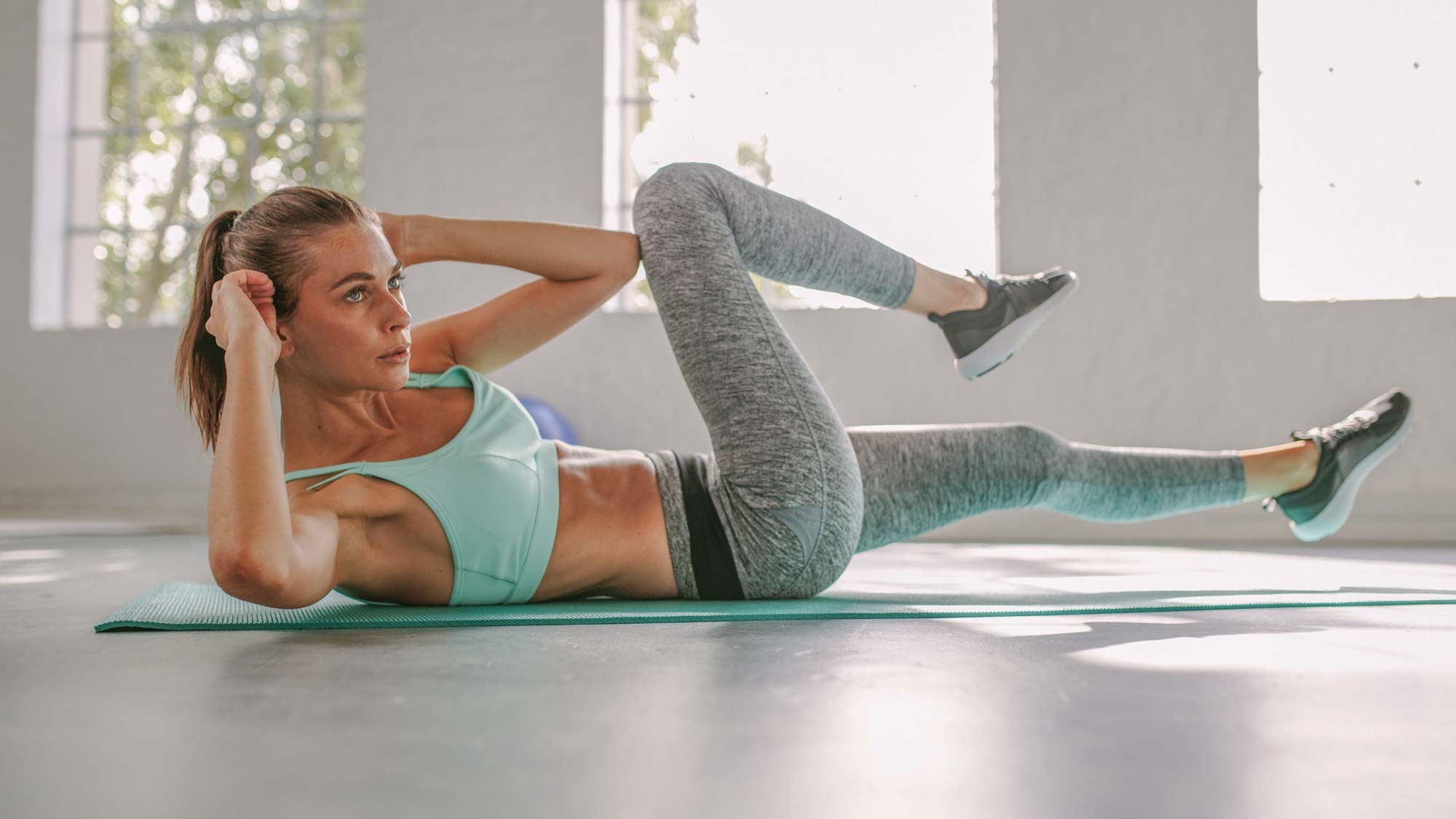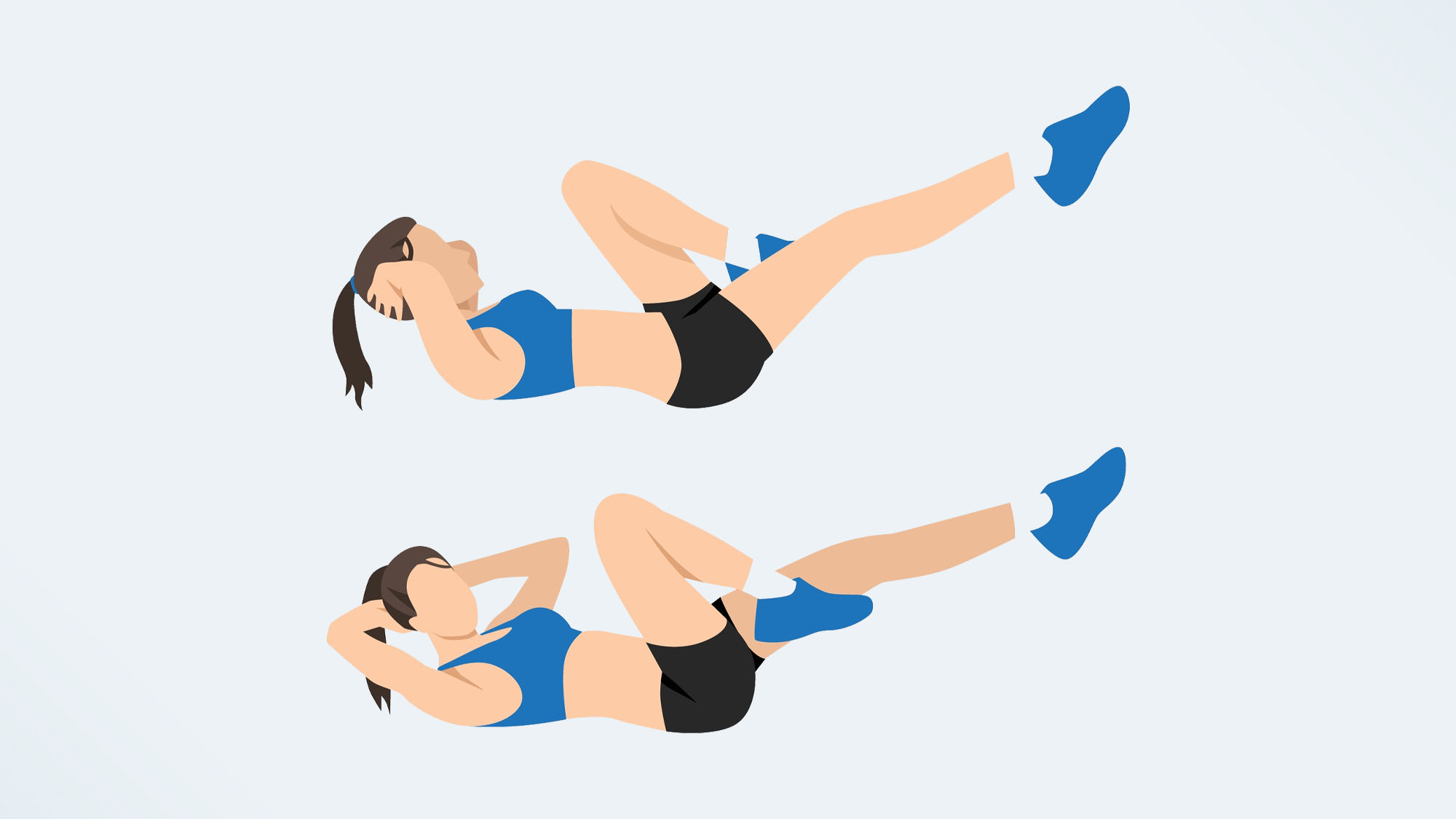
If there’s one ab exercise that gets you a lot of bang for your buck, it’s bicycle crunches. According to a study published in the American Council on Exercise, bicycle crunches are one of the most effective exercises to do when it comes to working on your midsection.
In fact, the bicycle crunch is excellent for engaging the rectus abdominis — the ‘six-pack’ ab muscles along the front of your stomach, the obliques, and the deep transverse abdominis, which are the hardest to target. You’ll also work your hamstrings and quads in this move.
But what would the effect of 100 bicycle crunches be? To find out more, I unrolled my yoga mat, engaged my core, and got crunching. Read on to find out what happened.
As a reminder, what works for me might not be right for you and your body, and if you’re new to exercise, or returning to exercise following an injury, it’s a good idea to check your form with a personal trainer before adding reps. It’s also worth checking with your doctor if you are pregnant, or have suffered from a lower back injury before doing bicycle crunches.
How to do a bicycle crunch
Let’s start by taking a look at how to do a bicycle crunch:
- Start on your back with your feet pressed into the floor, hip-width apart
- Suck your belly button towards your spine, place your hands lightly behind your head with your elbows wide, and raise your upper back off the mat
- Raise your legs to a tabletop position and engage your abdominal muscles
- Straighten the left leg slowly away from your body with your toes pointed. As you do this, bend your right knee towards your torso, and twist your left elbow to touch outside your right knee
- Swap sides by twisting to the other side, alternating with slow control.

It’s important to keep your lower back pressed into the mat for the entire exercise — not doing so can put pressure on your spine. To avoid arching your back, think about keeping your core engaged, sucking your belly button towards your spine, and perform the entire exercise slowly, with control.
If your neck hurts during the bicycle crunch, ensure you’re not physically pulling on your neck with your hands. The movement should come from the abdominal muscles, not your arms. Keep your eye gaze down towards your toes and your hands relaxed on your temples.
I did 100 bicycle crunches a day for a week — here’s what happened
What would 700 bicycle crunches do to my core? To find out more, I unrolled my yoga mat and got to work. Here’s my training diary from the week:
Day 1
Tom’s Guide readers will know, this isn’t my first weird fitness challenge for the brand — a few weeks ago I did 100 plank jacks a day for a week, and the week before that, 100 donkey kicks. I do bicycle crunches pretty regularly as part of my ab workouts, so I wasn’t expecting this one to be all too difficult. On day one, I opted for two sets of 50 reps, trying to reach my knee to my elbow each time.
The key to getting results from bicycle crunches is moving slowly, and with control — it’s important not to race through the reps, as more often than not, you won’t actually work your abs as hard as your hip flexor muscles will take over. 100 reps later, I felt a slight twinge in my abs, but nothing too dramatic.
Day 2
Day two followed the same pattern. I could feel the crunches in my core more quickly this time, but probably because I was working the same muscles as yesterday. As a reminder, it’s not recommended you work the same muscle group day after day, as your body needs time to recover — this is when your muscles repair, and grow stronger.
I did my 100 reps before heading out the door for a tempo session and found I was able to better engage my core on the run. Result! As a runner, a strong core is imperative — it can help you run faster and with better form.
Day 3
On day three, I decided to mix things up and try bicycle crunches with a hold. For this I slowed things down, pausing for a count of two each time my elbow reached my knee. I did five sets of 20 reps, 10 on each side.
I found these a lot harder than the faster reps, probably because I was forcing my core to activate for longer during the hold. Doing exercises that involve a hold increases the muscle's time under tension, which can help you to build muscle.
Day 4
On day four, I tagged my 100 bicycle crunches onto the end of a strength session in the gym. Grabbing a Bosu ball, I opted to do the bicycle crunches on there, forcing my core to work much harder to keep my body stable on the uneven surface. Five reps in I was shaking, and by the end of day four, my core was on fire.
Days 5 and 6
On days five and six, I returned to the solid ground but practiced holding one of the best adjustable dumbbells between my hands as I crunched. This upped the ante, and I could feel my core working hard, however by the final few reps on day five, I could feel I was tensing in my neck. On day six I put the weights to one side and did slower bicycle crunches with just my body weight.
Day 7
At last the end was in sight! On the final day of this challenge, I strapped a set of the best ankle weights and got crunching.
Ankle weights can easily cause joint strain, so if you’re new to the move, this is one to skip. I found using ankle weights forced my legs to work much harder as I extended and crunched them back in, and I definitely felt they turned the exercise into more of a full-body workout.
My verdict after a week? Bicycle crunches are an excellent ab exercise, and wow, I could feel this one in my core.
Of course, there were no physical results after 700 crunches — unfortunately, visible abs are the result of a low body fat percentage, so no amount of bicycling will give you a six-pack. That said, I felt like I’d worked hard, and on the mornings I did my reps before heading out for a run like I was able to engage my core and run with better form. This is one I’ll be repeating.







